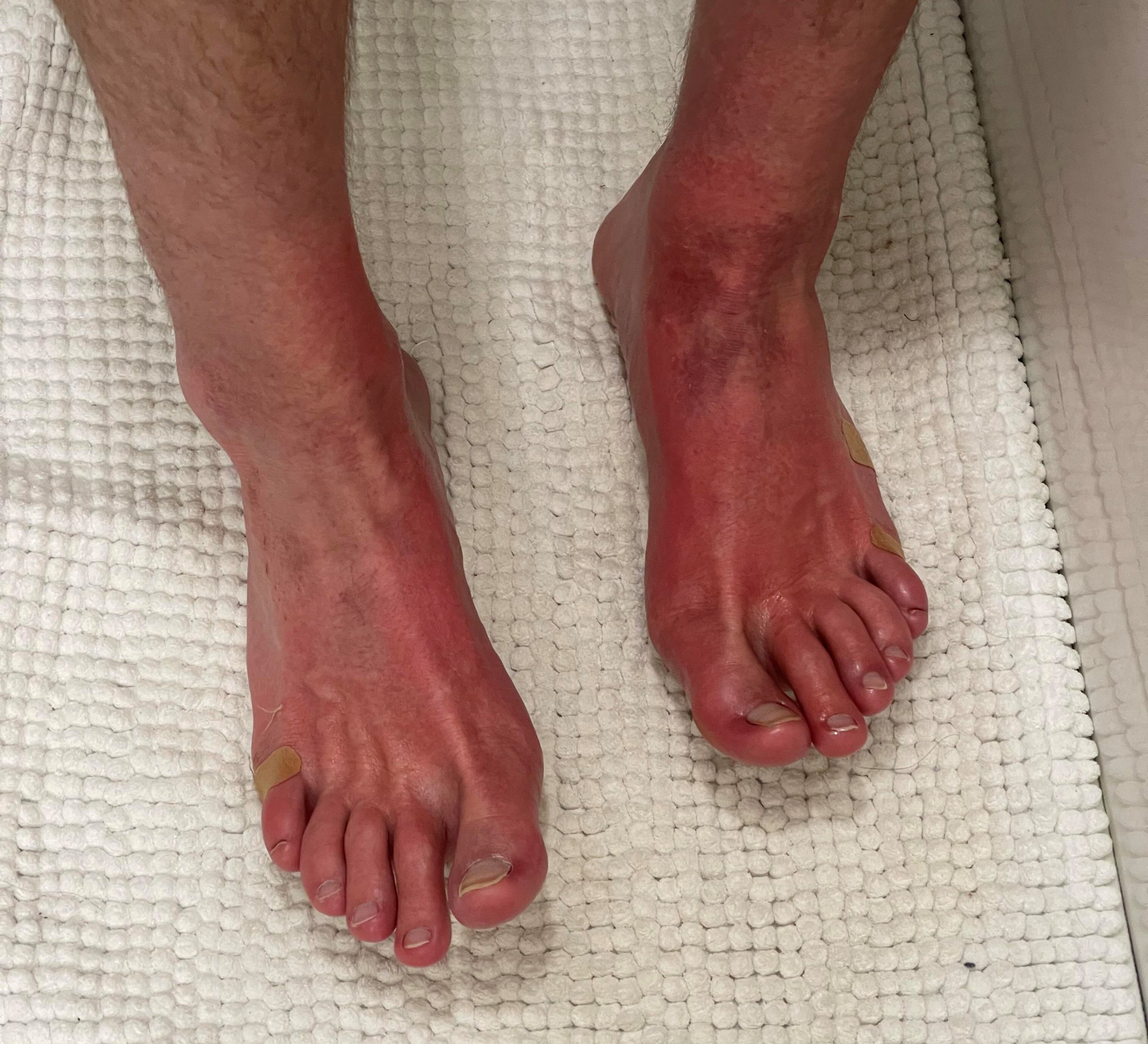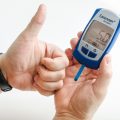
What is Grierson-Gopalan Syndrome?
Grierson-Gopalan Syndrome also known as burning feet syndrome, is a medical condition that causes severe burning and aching of the feet, hyperesthesia, and vasomotor changes of the feet that lead to excessive sweating.
Grierson-Gopalan Syndrome can even affect the eyes, causing scotoma and amblyopia. The condition occurs more frequently in women and usually manifests itself when a person is between twenty and forty years old.
What are the Symptoms of Grierson-Gopalan Syndrome?
Grierson-Gopalan Syndrome can cause any number of symptoms, including:
- Hypersensitivity
- Numbness and heaviness in the feet
- Prickling or tingling sensation
- Redness of the skin
- Severe aching and burning sensation in the feet (which is often worse at night)
- Sharp or stabbing pain
- Vasomotor changes that can lead to excessive sweating
To arrive at a diagnosis of burning feet syndrome upon presentation at the doctor’s place, the doctor will ask about the history of your symptoms. This will help determine the course of the symptoms’ progressions and their severity. A physical examination will also be conducted on the feet to identify any observable changes, after which a blood test will be ordered to screen for nutritional deficiencies and endocrinal disorders. Where nerve damage is suspected, you will also be asked to take a nerve function test.
What causes Grierson-Gopalan Syndrome?
The symptoms of Grierson-Gopalan Syndrome can result from many different conditions or diseases. These include:
- Nerve damage or entrapment. There are many possible causes of nerve damage. It may occur due to various illnesses, back injuries or slow breakdown (degenerative changes) of the spine, surgery, use of chemotherapy drugs or other medications, or exposure to toxins.
o Peripheral neuropathy. This is one of the most common causes of Grierson-Gopalan Syndrome. It occurs when the peripheral sensory nerves connecting the spinal cord to the extremities are damaged. People who have had diabetes for a long time, or those with poorly controlled blood glucose levels, are more likely to develop peripheral neuropathy. Diabetes-related peripheral neuropathy develops gradually and may worsen over time. Other conditions that can cause peripheral neuropathy include chemotherapy agents, hereditary diseases, auto-immune disorders (including rheumatoid arthritis), exposure to toxic chemicals, infections, kidney failure, alcoholism, and nutritional imbalances (vitamin B deficiency, malabsorption syndrome).
o Tarsal Tunnel Syndrome. The tarsal tunnel is a narrow space inside the ankle near the ankle bones. Compression or squeezing of the posterior tibial nerve (the nerve behind the largest long bone of the lower leg) inside the tarsal tunnel can result in sensations of burning, tingling, or pain in parts of the feet. The inner ankles and calves of the legs can also be affected.
o Morton’s neuroma. Nerve tissue may thicken between the bones at the base of the toes, causing pain. Shoes that are too tight can cause this type of neuroma, although it may also result from a sports injury, stress, or abnormal position or movement of the foot.
o Complex regional pain syndrome. This rare, yet extremely painful nerve disorder, may occur after an injury or surgery.
o Charcot-Marie-Tooth disorder. This inherited neurological disorder may cause damage to the peripheral nerves of the legs and feet. The damage becomes worse over time. Charcot-Marie-Tooth affects the muscles and nerves of the extremities resulting in abnormal weakness and lifting of the arches of the feet. Abnormal stresses on the feet can predispose to stress fractures and frequently these individuals will require bracing to function properly.
- Endocrine or metabolic disorders
o Diabetes mellitus. Type 1 and type 2 diabetes may affect the peripheral nerves of the body, especially the sensory nerves of the feet and legs. High glucose levels or poorly controlled diabetes can cause damage to the peripheral nerves, especially over the long term. High blood glucose levels affect the transmission of signals from these nerves and can weaken blood vessel walls.
o Hypothyroidism. An underactive thyroid gland may cause a sensation of burning in the feet, along with weight gain, dry skin, or fatigue.
- Infections
o Athlete’s Foot (tinea pedis). This fungal infection is caused by mold-like fungi called dermatophytes that grow in moist, warm areas of the skin. Damp shoes and socks and humid environments allow the fungi to grow and spread. Symptoms of an athlete’s foot may include itching, burning, and stinging between the toes and the soles of the feet.
- Other causes
o Erythromelalgia/Erythermalgia. This rare disorder can result in intense burning pain, increased skin temperature, and visible redness (erythema) of the toes and soles of the feet. The hands may also be affected. Its exact cause is unknown. Attacks may occur only at certain times (flare-ups) and last from several minutes to several days, or the burning pain might be continuous. The affected area may become tender, swollen, and warm.
o Footwear that is too tight or does not fit properly. Tight shoes or stockings can irritate sensitive feet or put pressure on certain parts of the foot.
o Stress due to exercise or physical injury.
o Allergies. Materials used to make shoes or socks may trigger symptoms.
o Contact dermatitis. Dyes or chemical agents used to tan leather might result in skin irritation.
o Other causes include chronic mountain sickness, Gitelman syndrome, Leishmaniasis, multiple sclerosis, psychological disorder (psychosomatic), hereditary causes, and unknown causes (idiopathic).
Grierson-Gopalan Syndrome Treatment
According to WebMD, the most important treatment for Grierson-Gopalan Syndrome due to neuropathy is to stop any ongoing nerve damage. In some cases, treatment of the underlying disease will improve the neuropathy and symptoms. In other situations, like small fiber neuropathy, where no cause can be identified, the physician will focus on treating the person’s symptoms.
For people with diabetic neuropathy, treatment means keeping blood sugar levels in the normal range. This usually requires dietary changes, oral medications, and often insulin injections.
For people with other forms of neuropathy that cause burning feet, preventing further nerve damage is equally important. Specific conditions and their treatments include:
- Vitamin deficiency. Taking additional vitamin B12 orally or by injection can replace low levels of this nutrient.
- Alcoholism. Stopping excessive drinking prevents ongoing nerve damage and allows nerves to heal.
- Chronic kidney disease. Dialysis may be necessary to eliminate toxins causing neuropathy and burning feet symptoms.
- Hypothyroidism. Taking oral thyroid hormone raises low thyroid levels, often reversing neuropathy as well as burning feet symptoms.
- GBS and CIDP. Treatments are very specialized and include plasma exchange (plasmapheresis) or immune globulin therapy (IVIG).
Burning feet treatments include treating the pain and abnormal sensations created by neuropathy. Some commonly prescribed medications for burning feet include:
- amitriptyline
- carbamazepine (Tegretol)
- desipramine (Norpramin)
- duloxetine (Cymbalta)
- gabapentin (Neurontin)
- pregabalin (Lyrica)
- topiramate (Topamax)
- venlafaxine (Effexor XR)
Other pain medications may be necessary to reduce the severe discomfort some people experience from burning feet. Over-the-counter medicines like Advil, Aleve, Motrin IB, and Tylenol control pain in many people with burning feet. Prescription pain relievers like tramadol (Ultram) or low-dose opiates (narcotics) may be necessary for severe pain.
For burning feet caused by athlete’s foot, antifungal drugs can cure the fungal infection and relieve burning feet symptoms. Over-the-counter medicines like miconazole (Micatin) or terbinafine (Lamisil AT) should be used first. Prescription antifungals like fluconazole (Diflucan), itraconazole (Sporanox), and naftifine (Naftin) are also available.





